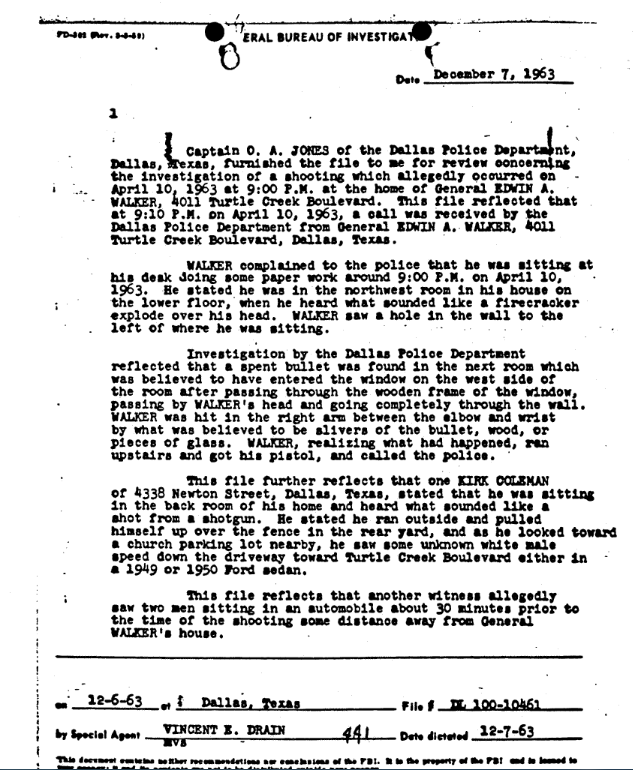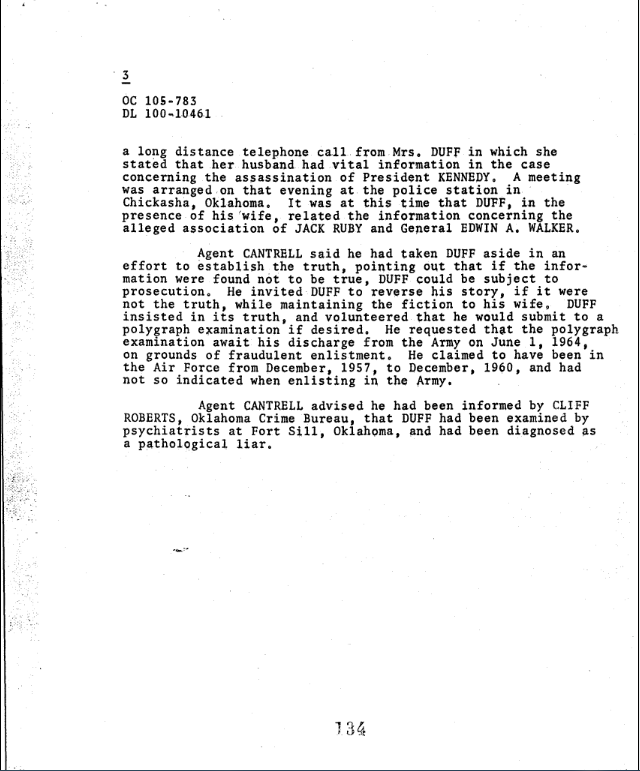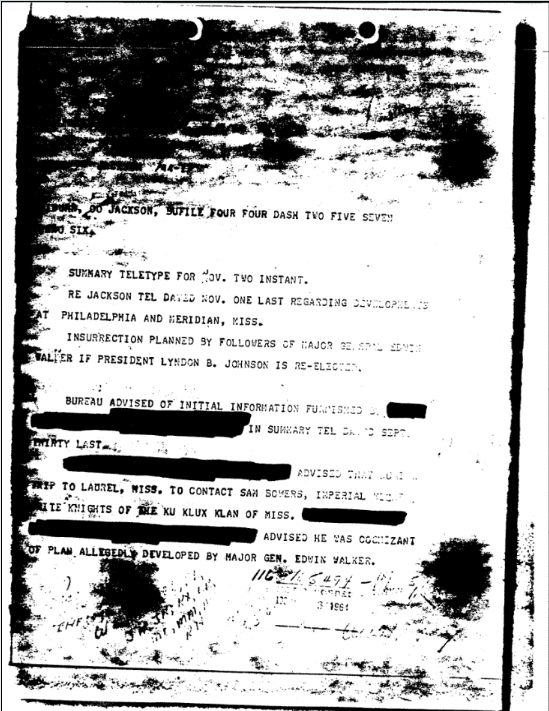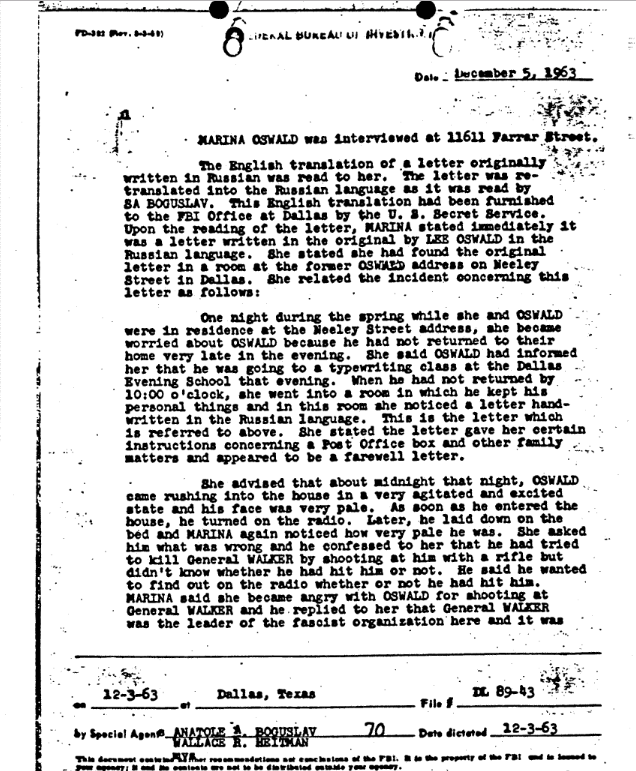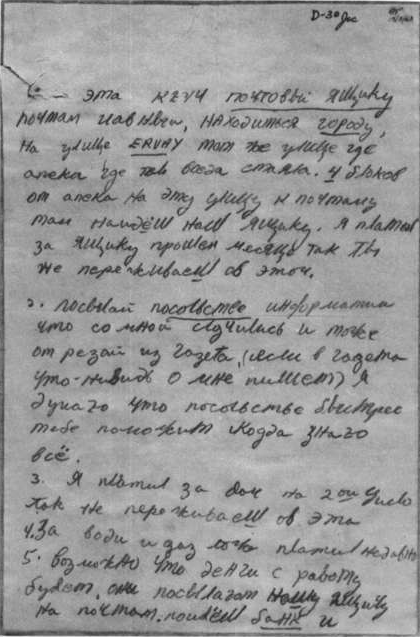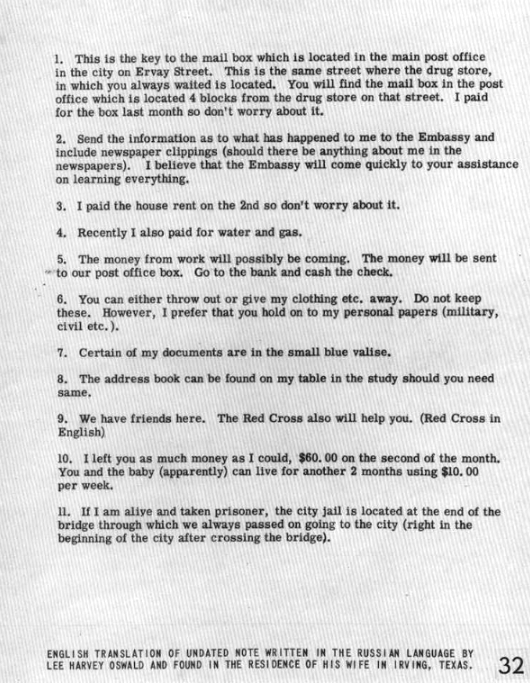PHOTOGRAPH OF GEN. EDWIN WALKER Walker’s home collected by officials
After Lee Harvey Oswald's murder, officials presume he was responsible for the assassination of President Kennedy, the shooting of Officer J.D. Tippit, and for the attempted assassination of General Edwin Walker. Unfortunately, they suppressed or ignored substantial contending evidence of multiple assailants, inconsistent witness testimony, and substantial evidence contrary to their allegations. This does not mean Lee Harvey Oswald could not have shot at Walker under any circumstances, but it does infer that if Oswald was involved he was not alone. It further would suggest that if Oswald is responsible he missed a close shot when firing at a nearly stationary target and reviewing the evidence offers additional questions and suspects.
Walker often discussed the attack in the Press
The German Newspaper "Deutsche Nationalzeitung und Soldatenzeitung" interviewed General Edwin Walker on President Kennedy's assassination. Walker suggested to the German Press that Oswald had shot at him but this occurs days before the Dallas Police Department found a letter Marina Oswald links to the shooting in a cookbook. The paper is printed and distributed publicly before the later accusations were attributed to Oswald.
The Washington Post and Times Herald reported the Dallas Police had conducted ballistics tests linking Oswald's weapon to the Walker case on February 19, 1964. Yet the media was unaware the FBI had taken custody of the JFK bullet fragments before the DPD could undertake such testing. The FBI noted this and contacted Jessie Curry the Chief of Dallas Police. Curry who was repeatedly quoted to support the articles claims informed the FBI he "gave no such information to the paper...Chief Curry further advised the Dallas Police Department made no 'ballistics test' of this material."
The Federal Bureau of Investigation conducted a series of test to discover if the bullets from each shooting matched. The results of Bureau laboratory tests state "...the bullet recovered from the attempted shooting of General Walker was different from the lead alloy of a large bullet fragment recovered from the car in which President Kennedy was shot."
Dallas City County Laboratory investigator Floyd Alexander states he "...was only able to ascertain the types of guns from which the bullet could have been fired but that this was speculation on his part. He explained this was due to the fact he did not have any weapon with which to make a comparison. Alexander stated he subsequently...had been unable to definitely determine the type of gun that fired the bullet...as there was nothing on which to base a written report other than the above speculation."
The President's Commission in private Executive Session observed notable problems with the Walker shooting and that it relied upon a minority of testimony. The Commissioner's also observed that while the caliber of the bullet was seemingly established, it was merely possible that Oswald's weapon could fire it. General Walker is noted to have later changed his previous statement and claimed he was unaware of the assailant's identity.
The House Select Committee on Assassinations' firearms panel did not match Oswald's weapon to the Walker bullet, it found that it was similar as previous officials had. This does not exclude other weapons from having fired the bullet, it merely confines the projectile to similar types of weapons. Officials state the bullet "probably" was the type Oswald's rifle used, not definitively and thousands of other weapons in the United States used this type of bullet as well.
General Edwin Walker during his period of service in the US ARMY
One of the largest problems with the Walker allegations are the ignored and featured witnesses used to bolster the official case. The victim General Edwin Walker is among the problematic witnesses in the entire affair and Dallas Police Department Captain O. A. Jones states "...it is difficult to investigate any type of matter where General Walker is involved since Walker apparently does not know the truth from fiction and leads the police up many blind alleys." Walker's varying claims and inconsistent accusations created additional problems for investigators and the lone other suspect developed by police is William MacEwan Duff, a former militant roommate that Walker ordered to leave weeks prior to the shooting.
Edwin Walker hired two private investigators, a former police officer and the other was a former Bureau of Narcotics agent. They subsequently followed and engaged Duff in private conversation while offering him five thousand dollars to shoot Edwin Walker and Duff's allegedly interest was reported to Dallas Police. Police absolve him of the crime based on a less than decisive polygraph test and Duff later claimed that Jack Ruby was connected to General Walker, however when Duff was previously examined by psychiatrists at Fort Sill they diagnosed him as "...a pathological liar."
Some may ask what purpose could be served by Walker's earlier press claim about Oswald and using the shooting to "...spur his crusade". The answer may be to gain followers; these followers could be used to launch a public revolt similar to the riot he spurred against police officers in Mississippi for officially supporting integration. Walker is never legally punished for his prior actions, he might have believed his future actions too would escape legal consequences or even be successful. Multiple FBI informants reported plans to revolt by Walker and the Ku Klux Clan if Lyndon Baines Johnson won the upcoming election.
MArina Oswald provided Differing Official Statements
Officials seized upon Marina Oswald's first statement that recounts Oswald in a panic returned home claiming he shot at General Walker but additionally states never observing him with a rifle at any time. Marina claims they later moved to prevent Oswald from repeating such a deed, yet it was more likely the move was because Oswald was seeking work and they were behind on rent. According to Marina, Lee Harvey Oswald buried the rifle at the crime scene and ran away on foot but was somehow unobserved despite an eyewitness arriving shortly after the shot was fired. This is highly unusual because it would require Oswald to spend an extended time at the crime scene after the shot was fired and no single individual was discovered at the scene burying anything. It also is ponderous to imagine that Oswald would leave his weapon to possibly be discovered by police and that he would sometime again unobserved return to the area to dig up his rifle to again chance capture.
In a following statement Marina Oswald states never seeing Oswald practice with the rifle, she also never heard Oswald state he was going to use the rifle. Marina believed the only time she knew of Oswald using the rifle was to fire at General Walker. Seemingly Oswald had never practiced with the Carcano for any shooting he was alleged to have undertaken.
The eyewitnesses near the area of the shooting did not observe a lone person in the area or fire the shot. Eyewitness Robert Surrey observed two men days before the shooting sitting in a car and then later inspecting the windows and area surrounding the Walker home. Surrey offers that neither of these men resembled Lee Harvey Oswald.
Eyewitness Walter Coleman heard the shot fired at the Walker residence and rushed to his back fence to observe the adjoining Mormon Church parking lot. Coleman observed two men of varying height and weight rushing to different vehicles and departing separately but Lee Harvey Oswald did not own a car and possessed no driver's license.
THE Other Walker LETTER WAS RECEIVEd after Oswald’s capture
Authorities connected two notable letters to the case; one is quite well known, it is an unsigned, undated, letter written in Russian. Officials have claimed Lee Harvey Oswald wrote the letter and Marina Oswald read the letter but investigators noted that neither person's fingerprints appear on the letter, while unidentified fingerprints do. Officials also claim it regards Walker but his name is not in the letter and some official experts declaring the letter matches Oswald's writing ignore these facts. The letter while indicating that Oswald planned for some future action that might result in his arrest could have been related to a number of his subversive activities or varying staged and genuine public encounters to generate attention. Officials presumed that it was related to the Walker attack but this was long after General Walker had implanted the concept into the media long before the letter’s existence was revealed.
Yet authorities do not regard a following typed threatening letter. The undated and unsigned later message threatens Edwin Walker with death after Lee Harvey Oswald is captured thus Oswald is feasibly not the only logical suspect responsible for the shooting and ongoing threats to Walker are beyond Oswald's power. It proves other parties violently hated Walker and might have been responsible for the activities during which two men are observed. The contending evidence and possible suspects may have escaped past investigations rendering more official questions than answers.
References:
Federal Bureau of Investigation, Oswald Headquarters file, Section 201, Letter to Rankin, August 11, 1964
FBI, Oswald HQ File, Spectrographic comparison examination, Section 108, March 27, 1964
Central Intelligence Agency, Oswald 201 file, Statement of Floyd T. Alexander, June 2, 1964
President's Commission Executive Session, April 30, 1964, p. 11
FBI, Files on Edwin Walker, Cross-References part 7, Statement of Captain O.A. Jones, December 7, 1963
Report of the House Select Committee on Assassinations, Section 1, Part A, p. 60
FBI, Files on Edwin Walker, 116-165494, Section 3, Alleged Klan participation in Insurrection Plot, November 5, 1964
Ibid, Heavily redacted report, November 2, 1964
FBI, Files on Edwin Walker, CR 7, Statement of Marina Oswald, December 5, 1963
CIA, Oswald 201 file, Investigation concerning attempted assassination regarding Marjor General Edwi, FBI Statement of Robert A. Surrey, June 4, 1964, pp. 1-2
Ibid, FBI Statement of Walter Kirk Coleman, June 4, 1964, pp. 1-2
President's Commission Hearings, Volume XVI, Commission Exhibit 1, Unsigned note to Marina Oswald, pp. 1-2
FBI, JFK HQ file, Section 36, Latent Print Examination, December 5, 1963
City of Dallas Archives, John F. Kennedy Archive, Letter to Edwin Walker, Box 1, Folder 8, file 10, (n.d.)
Related Articles:
The Rumor heard around the World
Related Podcasts:
The Lone Gunman Podcast: The Walker Incident
General Willoughby, General Walker, and the JFK Case
Research by: C.A.A. Savastano
Back to the Vault




















